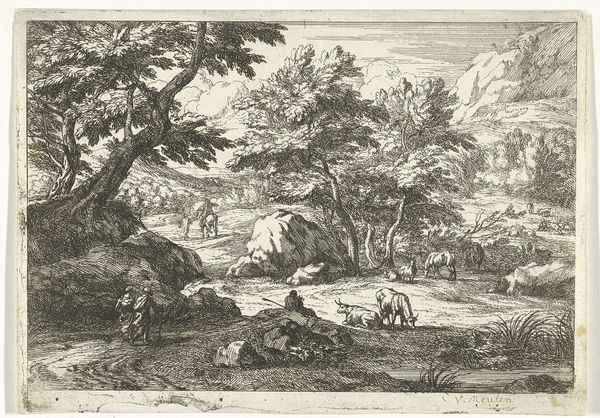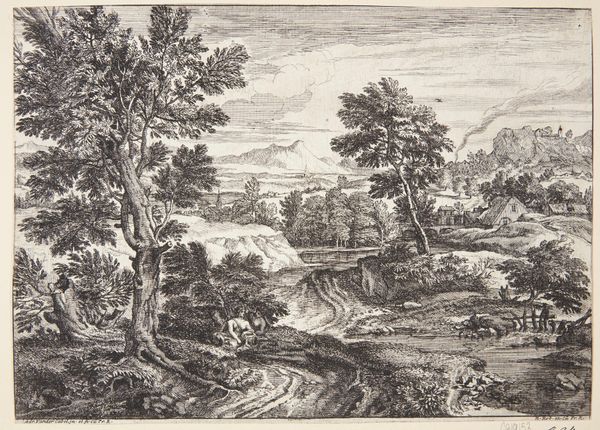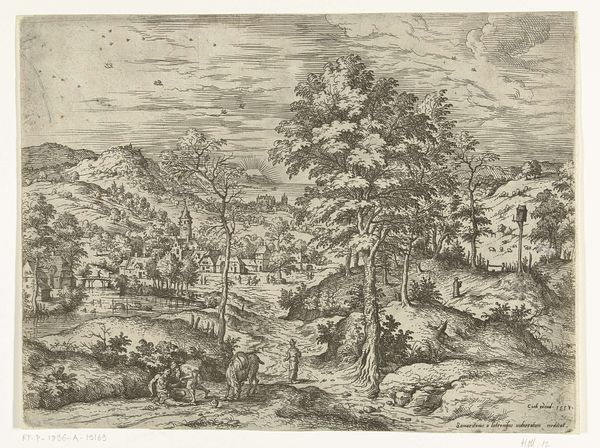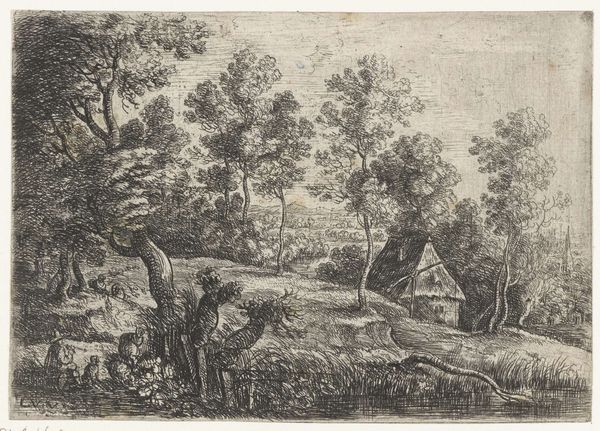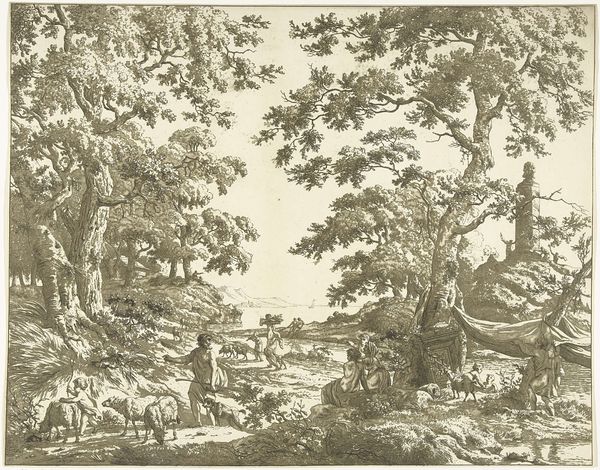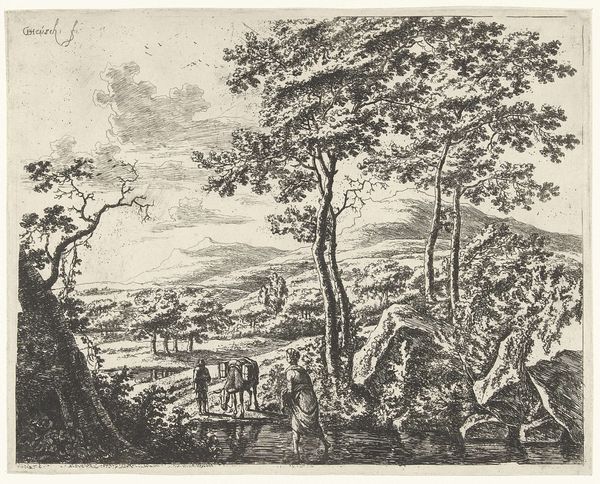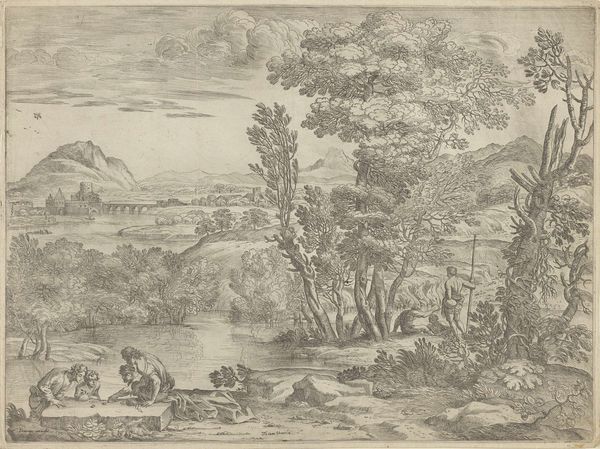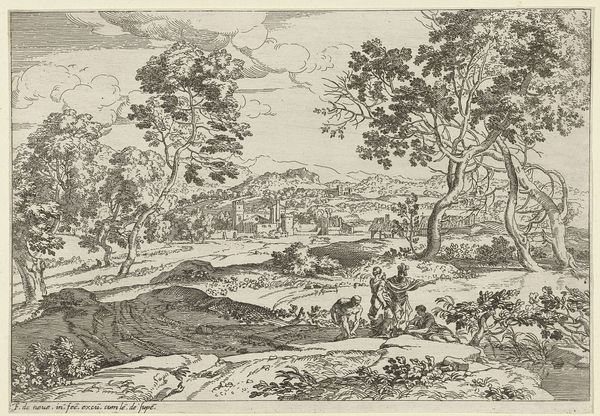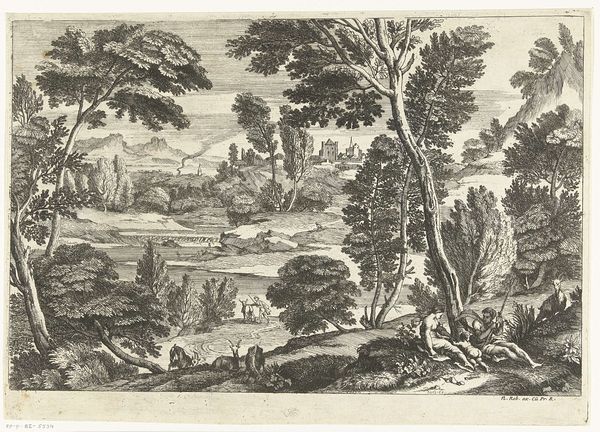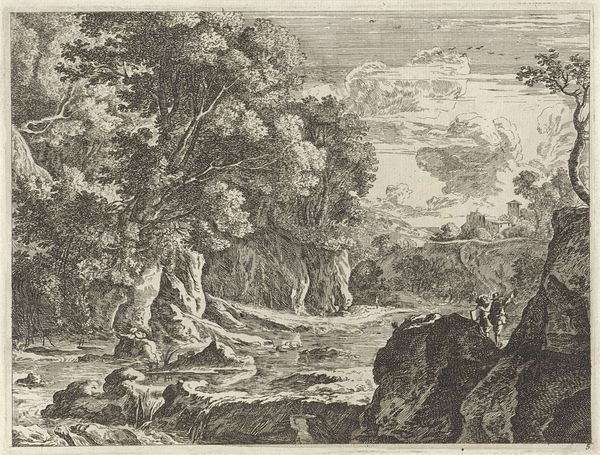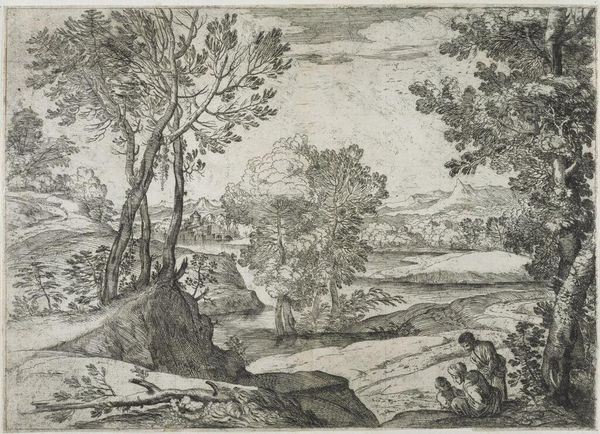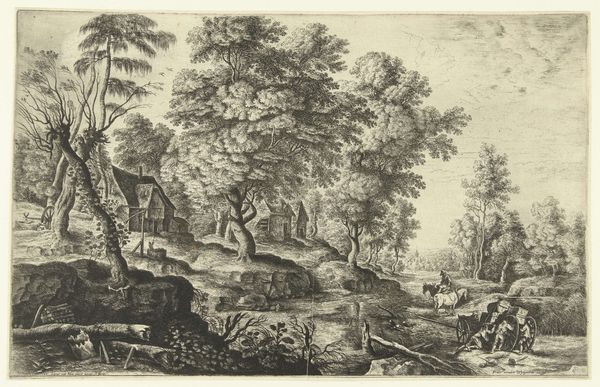
#
pen and ink
#
landscape illustration sketch
#
pen drawing
#
pen illustration
#
pen sketch
#
old engraving style
#
pen-ink sketch
#
mountain
#
botanical drawing
#
pen work
#
botanical art
Dimensions: height 140 mm, width 219 mm
Copyright: Rijks Museum: Open Domain
Curator: It feels like a half-remembered dream. Something seen out of the corner of one’s eye, misty and slightly menacing. Editor: We’re looking at “Landschap met drie figuren” – Landscape with Three Figures – attributed to Adriaen van Diest, created sometime between 1665 and 1704, using pen and ink. Curator: The lines are so precise, yet the overall effect is wonderfully atmospheric. You can almost smell the damp earth. I find myself drawn to the meticulous detail in the trees. They give it a tangible grounded presence despite the airy mountain backdrop. I find myself wondering what type of pen and paper Adriaen van Diest chose for this pen-ink sketch? Editor: I am drawn to the positioning of the figures and, of course, their function within this vista. Their gestures invite us into the landscape, directing our gaze toward the city nestled in the valley beyond. The composition itself subtly reinforces established societal power structures of the period with people existing amongst monumental landscape, but still being inferior to it in scale. The mountains form the apex and are therefore supreme in terms of the overall implied societal structure. Curator: Interesting, that reading seems more institutional that intimate. It’s as if van Diest isn't merely capturing a scene, but also capturing a specific mode of artistic production. Were landscape artists generally regarded as inferior at the time for instance because of their use of organic elements that were regarded as crude. Editor: Possibly. There were of course academies that were trying to dictate artistic rules at the time. Their influence rippled through patronage circles as they shaped societal perceptions of value and sophistication when commissioning art. Works were exhibited according to a hierarchy of genres in line with the thinking of various institutions in different nation states across Europe. Landscape tended to feature lower in this rigid classification. Curator: A perfect example of that interplay between the organic and the structural in 17th-century visual arts. It's not just about picturesque beauty, it's also about artistic lineage and hierarchy in materiality. Editor: Exactly. It’s the subtle negotiations of cultural status written in the pen strokes that tell such a valuable historical narrative to us centuries later.
Comments
No comments
Be the first to comment and join the conversation on the ultimate creative platform.
